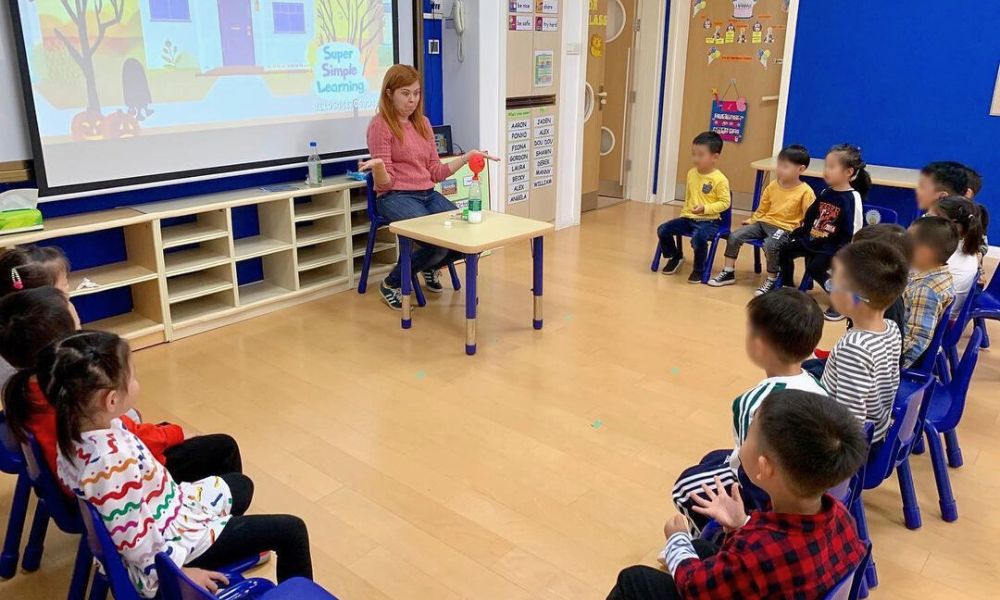
Teaching English in China – My Transformative Adventure Abroad
Hi everyone! I’m Nevena and in this article, I’d like to share with you my story of how I launched an English teaching career in China, and my best tips on how you can do the same!
As an aspiring English teacher with a deep passion for exploring the world and embracing diverse cultures, my decision to teach in Shanghai marked an important step toward personal and professional growth.
Before embarking on my teaching adventure in China, I scoured numerous online job boards and teaching platforms in search of a suitable teaching position that aligned with my goals. What struck me during this process was the universal requirement among reputable schools for a teaching certificate, and I couldn’t help but feel that my hard-earned teaching certification had finally paid off.
Preparations
Securing a teaching job in China also involved navigating the intricacies of the visa process, which required the collection and verification of various documents. Usually, once you receive a job offer, the school assists you with the visa process. However, rules may change, and there might be specific documentation that you can only obtain from your home country. Therefore, it’s wise to double-check the work visa requirements for your country.
If time allows, learning basic Chinese phrases can also be immensely helpful. Connecting with local expats in the city you’re moving to and installing essential local apps like WeChat (for chatting, sharing pictures and videos, translating, sharing location, job applications, buying and selling) and a VPN for accessing websites blocked in China, such as Facebook and Instagram, are also advisable.
Arrival
Impressions on the plane to Shanghai were a mix of surprise and confusion. One thing I found to be quite interesting was that older people were engaging in exercises on the plane.
Upon arrival, the plane descended, and I couldn’t see the ground until the very last moments before landing. I later learned that this was due to air pollution, which is common in metropolitan cities like Shanghai.
💡Tip! Consider bringing a face mask, as you may find it useful from the very first day, especially if you’re moving to a big city such as Shanghai, Beijing, Shenzhen, Guangzhou, Chengdu, etc.
Upon my arrival at the airport, a friendly representative from the company that had hired me was there to greet me. She guided me through the subway system and then to my apartment.
I couldn’t help but notice that most people on the subway appeared much younger than their age and were engrossed in their smartphones. Shanghai’s subway offers free Wi-Fi, making it a rarity to find someone not looking at their phone.
Navigating practicalities
Upon reaching my apartment, I had a few days to settle in before starting work on Monday. Navigating practical matters in a foreign land proved to be an adventure in itself.
Simple tasks, such as signing up for a phone plan, opening a bank account, or making online purchases, were nearly impossible without the assistance of a Chinese-speaking individual. So make sure you become friends with local folks and be prepared for long waits, as meticulous documentation review is customary when dealing with foreigners (“laowai”).
A new world of flavors
Food, another vital aspect of daily life, introduced me to a brand new world of flavors, and I embraced it from day one. Chinese cuisine and restaurants offer a broader range of choices than in the Western world.
The food is not only affordable but also boasts a vast variety of delicious options. From street food vendors to local eateries, each meal became a delightful culinary exploration. Some of my favorite dishes include Spicy Green Beans, Kung Pao Chicken, Beijing Roast Duck, Sichuan Stir-Fried Potatoes, Xiao Long Bao (soup dumplings), and dim sum.
First week
As the weekend and visiting all the nice restaurants flew by quickly and Monday dawned, I reported to the tutoring company that had hired me. There, my first culture shock moment occurred when they asked if I wanted water, and then presented me with hot water which it turns out is a popular choice when it comes to drinking water.
My initial job in Shanghai involved going to students’ homes to teach them English. My first student was a well-behaved 4-year-old boy named William. He was remarkably disciplined, paid close attention, sat properly, and surprised me with his attentiveness. I had previously taught children of his age, and they often had shorter attention spans and struggled to stay focused in a non-native language environment.
During my time teaching in China, I had the opportunity to teach a variety of students and classes, both children and adults. My classes unfolded in diverse settings, ranging from homes and school classrooms to coffee shops and corporate offices.
Luckily, my teacher training equipped me with effective classroom management techniques, engaging lesson planning, and adaptability, which were invaluable in preparing and conducting classes.
Getting your TESOL/TEFL certificate: To teach English in China, you need to have an accredited and recognized 120-hour TESOL/TEFL certificate.
If you haven’t enrolled in the course yet, you can do so here:
.
Cultural differences
During the classes, several notable cultural differences became apparent. One of the most striking distinctions was the deep-seated respect for authority. This respect manifested through thoughtful gestures, such as receiving generous gifts like two large boxes of apples from an appreciative student on the very first day we met.
Another marked difference lay in the homework load. Children were accustomed to extensive assignments and the practice of rote memorization, which was something I was committed to changing.
Additionally, the concept of “Face Culture” emerged, where some students expressed reluctance to answer questions to avoid providing incorrect responses or potentially embarrassing themselves. This was maybe one of the biggest cultural differences as I was often surprised when students couldn’t answer simple questions about themselves. In reality, they just didn’t want to embarrass themselves by not answering in perfect sentences and pronunciation.
As a result, I learned to adapt my teaching materials to suit the unique preferences and learning styles of each student was essential. So be flexible and open to tailoring your approach to ensure effective and personalized learning.
Reflections
Finally, my journey of teaching in China was a transformative experience that opened my eyes to the beauty of cultural diversity and taught me the value of adaptability, humility, and perseverance. It was also a blend of challenges and rewards that enriched my life in countless ways. So if you’re considering a similar adventure, I encourage you to take the leap.
Get your TEFL/TESOL certification, find your dream job, embrace the Chinese culture, and let the world be your classroom.
Want to start your teaching career? Get TESOL/TEFL certified:
To teach English overseas and online you’ll need to have an accredited and recognized TESOL/TEFL certificate.
With World TESOL Academy’s accredited 120-hour TESOL/TEFL course you’ll develop the necessary skills needed to launch your teaching career.
.



















Leave A Comment